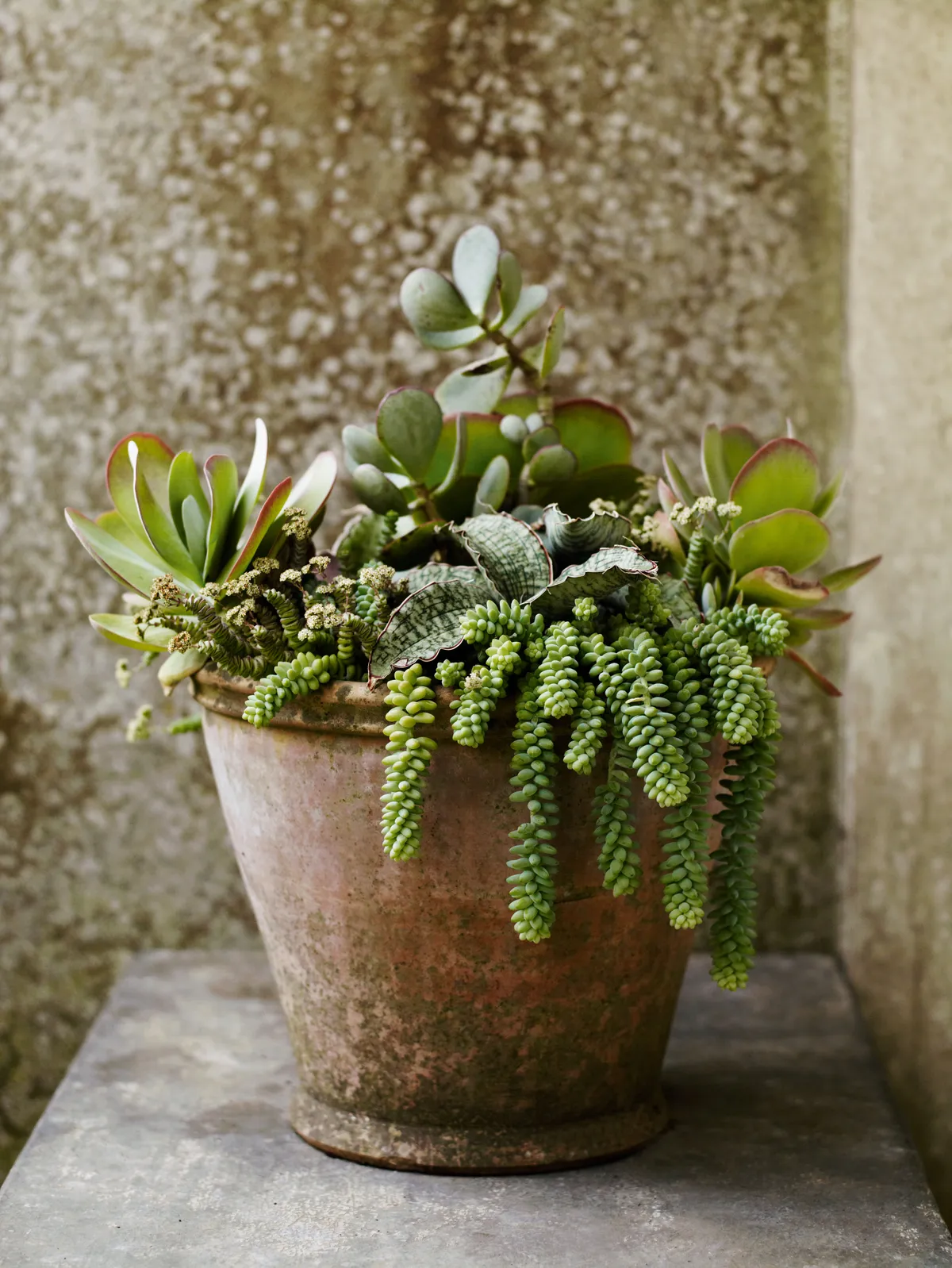As the winter nights grow longer and temperatures drop, I like to remind myself of the hot summer days spent in the garden or travelling abroad. In this pot display the terracotta holds a rustic warmth that is complemented by the cool, monochromatic planting. Succulents are used throughout the entire display and reference their arid growing conditions, hopefully providing an uplifting contrast to the dark days of winter.
How to achieve the look
Container and composition
The container is a classic, simple shape. Most importantly, it has a wide top that allows for a generous arrangement. Warmth comes from the weathered terracotta, its subtle markings echoed in the mottled foliage of the sansevieria. Its glaucous tones are repeated throughout the planting, emphasising the texture and form of the plants while perfectly complementing the soft terracotta. Tinges of dark-red detail on some of the foliage highlight the various leaf shapes and bring a warmth to the planting. Mixing bold plants, such as the kalanchoe and sansevieria, with those of a softer texture, such as the sedum and crassula, provides interesting contrast.

Plants:
Sansevieria kirkii ‘Silver Blue’ (above left) Unusual sansevieria with thick blue-green leaves. 20cm. RHS H1.
Kalanchoe thyrsiflora (above right) Large, paddle-shaped leaves. Prefers a sunny frost-free site. 50cm. AGM. RHS H2.
Crassula rupestris subsp. marnieriana ‘Hottentot’ (below left) Succulent with snake-like stem. Best in sun. 15cm. RHS H2†.
Crassula arborescens (below centre) Branching succulent with flat blue-grey leaves that have a burgundy margin. Prefers sun. 1.2m. RHS H2.
Sedum burrito (below right) Low-growing succulent with thick trailing stems. Prefers sun. 1m. RHS H2.

Planting and care
Succulents are relatively slow growing, so be generous when planting and select a suitably sized pot that will look full when planted.
- Fill the pot with a soil-based compost and added grit.
- Begin to add plants by positioning the largest specimens first, before gently filling in gaps with smaller plants. Add additional potting mix as you go to ensure plants are held firm and secure.
- Once complete top dress with horticultural grit to prevent soil from splashing on the plants when watering. Use a narrow trowel, or a hori hori, to help ensure you get the potting mix and grit into difficult, hard-to-reach gaps. Water in well.
These are all tender plants that need a frost-free site, so in winter keep inside in a warm, sunny spot, and water sparingly. The pot could be put outside in late spring, when all risk of frost has passed.



